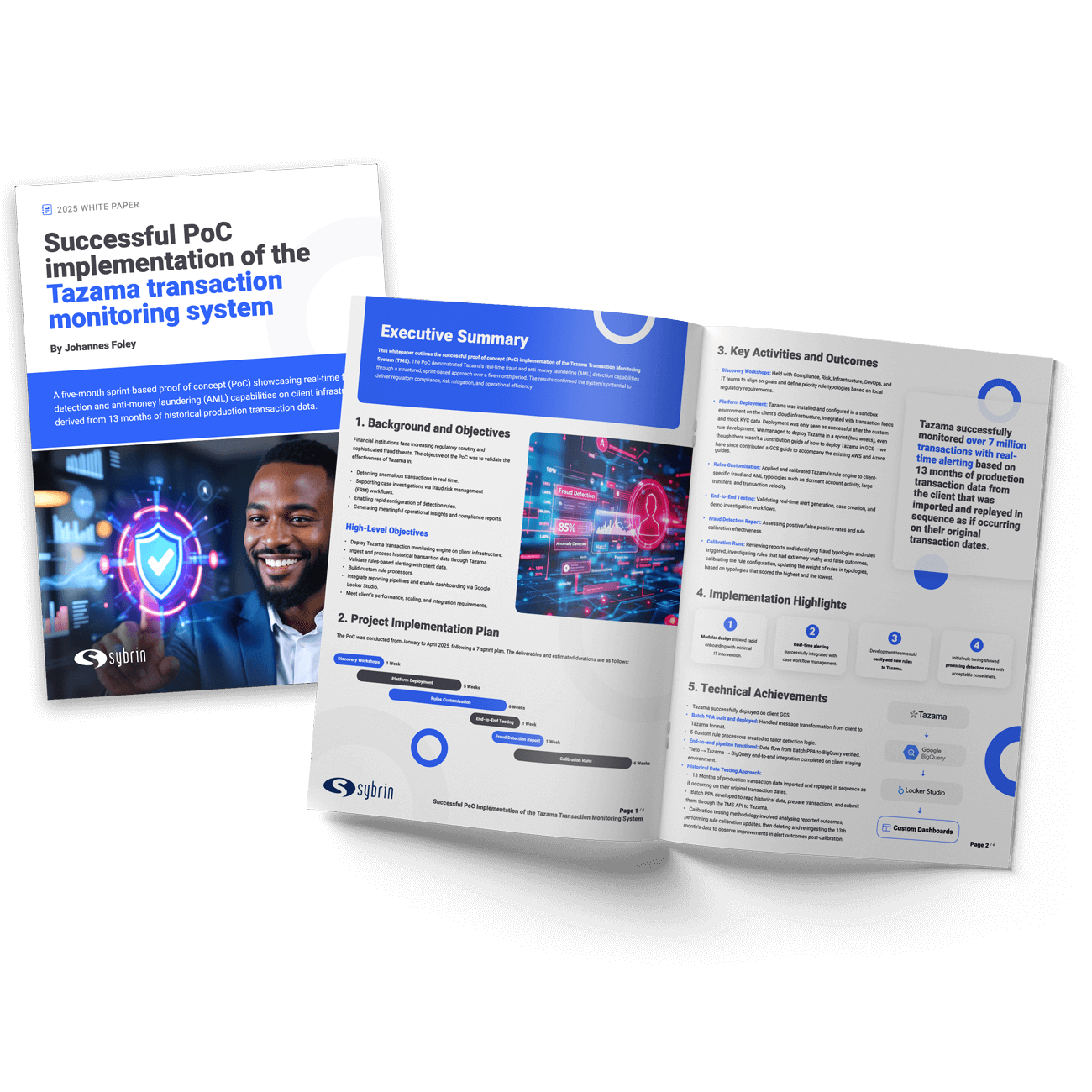What You'll Learn
This white paper details Sybrin’s successful five-month proof of concept implementing the Tazama Transaction Monitoring System on a client’s infrastructure, leveraging 13 months of historical transaction data to demonstrate powerful real-time fraud detection, AML monitoring, and regulatory compliance capabilities. Through a structured sprint plan, the team conducted workshops, deployed Tazama in the cloud, customised rules to target client-specific risks, validated end-to-end alerting and investigation workflows, and built rich dashboards. Key outcomes included seamless scaling, high detection accuracy after calibration, and flexible integration that met all performance needs.
-
1. Background and Objectives
The PoC was to validate the effectiveness of Tazama to financial institutions by demonstrating its real-time anomaly detection, case investigation support, quick rule configuration, and insightful compliance reporting by deploying it on the client’s infrastructure, processing historical data, customising rules, integrating dashboards with Google Looker Studio, and meeting all performance and scaling needs.
-
2. Project Implementation Plan
The PoC ran from January to April 2025, structured over seven sprints to ensure a focused rollout. It included 1 week of discovery workshops, 2 weeks of platform deployment, 6 weeks of rules customisation, 1 week of end-to-end testing, 1 week of generating a fraud detection report, and 6 weeks of calibration runs to fine-tune performance.
-
3. Key Activities and Outcomes
Key activities included discovery workshops with client teams to set goals and prioritise rule typologies, deploying Tazama in a sandbox on their cloud as well as contributing a new GCS deployment guide, and customising rules for fraud and AML scenarios like dormant accounts and large transfers. This was followed by end-to-end testing of real-time alerts and investigations, generating a fraud detection report to evaluate accuracy, and running extensive calibration to fine-tune rule weights and improve detection outcomes.
-
4. Implementation Highlights
Implementation highlights included Tazama’s modular design enabling quick onboarding with little IT effort, seamless integration of real-time alerting into case workflows, straightforward addition of new rules by the development team, and early rule tuning that achieved strong detection rates with manageable false positives.
-
5. Key Learnings and Takeaways
Key takeaways were that Tazama’s flexible integration made deployment smooth, while batch ingestion met immediate needs, real-time was also proven. Custom rule tuning proved vital for accuracy, horizontal scaling ensured readiness for high volumes, vertical scaling was needed only for ArangoDB, and disabling ELK logging was necessary to optimise batch performance.

